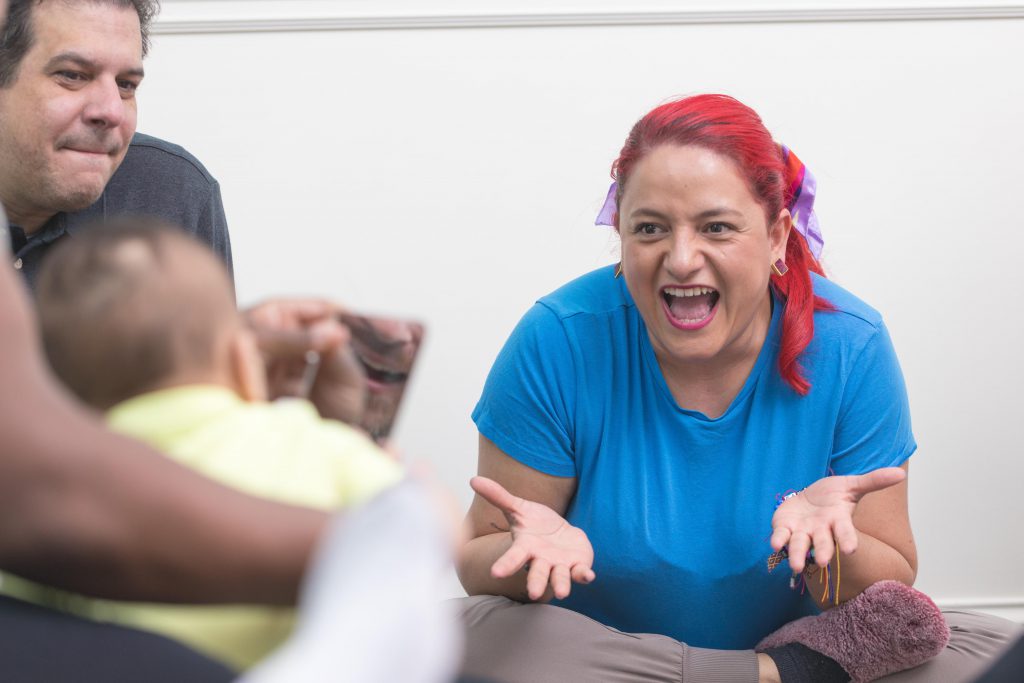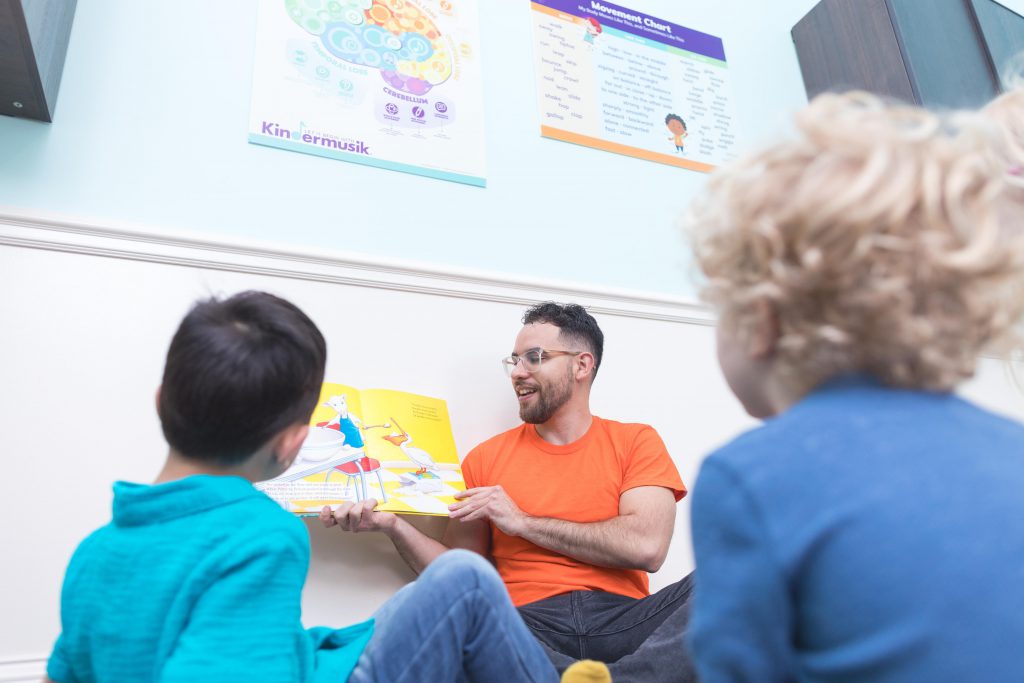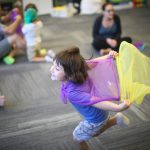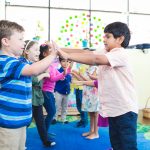How Music Affects the Science of Reading
The Science of Reading is kind of a buzzword these days in the early education and parenting worlds, but what does it really mean and what role does music play?In a nutshell, the Science of Reading is a catch-all term for the massive amounts of research that look at how our brains learn to read through decoding, phonemic awareness, and more. It doesn’t just happen, it’s science, and educators around the world are tapping into its framework.
What might be missing from traditional classrooms and at-home efforts? Music!
Music, like reading, is rooted in science. It’s rhythm, it’s auditory discrimination, it’s memorization, and all the things that are key to reading skills. When you pair music with read-aloud and movement, that’s the ultimate multisensory experience—all parts of the brain are firing. That’s what Kindermusik is all about and that’s where the scientific magic happens. In fact, research shows preschoolers who received just 30 minutes a week of Kindermusik demonstrated 32% greater gains in language and literacy skills.
So, how can you incorporate musical play into your own efforts to help pre-readers and early readers succeed? We’ve got a few ideas.
4 Ways to Boost The Science of Reading with Music
Sing.

Yes, it’s that simple, but not just singing in the car or during a designated “music time.” Singing slows down our language expression and mouth movements allowing children to decode the sounds.
Sing throughout the day—during transitions (like lining up or moving from playtime to mealtime), when you’re looking for your keys, or any time you can get face-to-face with little ones so they can see your mouth movements and imitate you.
We love “Gonna Shake Out My Hands” on the free Kindermusik App (in the Body theme playlist) for handwashing time. You’re usually in front of a mirror, so being able to see mouth movements as you sing while connecting lyrics with movement and vocabulary (“shake ’em up high, shake ’em down low”) is a big plus.
To really reap the benefits of singing to your children or students, make sure it’s in a pitch they can hear and imitate!
Clap.
The rhythmic patterns of music mirror the rhythmic patterns of language, so practicing steady beat recognition and expression is a huge literacy skill booster.
Clapping along to the music helps practice steady beat, and clapping along to syllables in a rhyme helps practice rhythm. When those things converge, it’s a major brain workout.
A study from Northwestern University that centered on early readers’ ability to clap to the beat supports the theory that “synchronizing movement to a steady beat relies on this bidirectional connection between sensory and motor systems, and activates many of the auditory and cognitive processes used when reading.”
Try the nursery rhyme “Hickory Dickory Dock” (1-2-3, 1-2-3, 1). Clapping it out forces us to feel the rhythm of the multisyllabic words, making it easier for children to mimic them in spoken word (and as they read!) later. You can find a musical version of this activity on the free Kindermusik App.
Rhyme.

Rhyming is another way to support phonemic awareness early on. Look for books and songs with rhyming words to help little ones understand emphasis, word formation, pattern recognition, and prediction.
For example, in “Rain Rain Go Away,” children will likely latch on to that last word of each stanza:
Rain, rain, go away
Come again another day
One way to help them test their phonemic abilities is to pause and let them fill in the rhyming word in songs or books. Most young brains are pre-wired to make these connections, but practice makes progress!
Kindermusik.
Group musical play reinforces the early reading benefits and makes learning extra fun! Whether you’re a teacher looking for full or supplemental musical play curricula or a parent/caregiver looking for a live experience, Hamilton School of Music can help.
The best part about incorporating the science of music into the science of reading is that it’s joyful. That’s what sticks with us—joy. So, try out these easy, no-stress ways to boost early literacy skills and watch the scientific magic happen.




